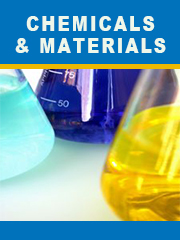Report overview
Cobalt base alloy has exceent heat resistance. Corrosion resistance and oxidation resistance. Cobalt-based alloy powders is in Co-Cr-W based on tae alloy add right amount B. Si elements and initiative. B-Si elements join to make Co-Cr-W alloy has the characteristics of the self fluxed alloy. The significantly lower melting point alloy.Deoxidizing slay making good performance. Moderate to join part Ni. In the temperature range 600-800? high temperature resistant. The oxidation resistance. Red hardness wear-resisting corrosion resistance. Sour gas corrosion resistance is better.
This report aims to provide a comprehensive presentation of the global market for Cobalt Alloy Powder, with both quantitative and qualitative analysis, to help readers develop business/growth strategies, assess the market competitive situation, analyze their position in the current marketplace, and make informed business decisions regarding Cobalt Alloy Powder. This report contains market size and forecasts of Cobalt Alloy Powder in global, including the following market information:
Global Cobalt Alloy Powder Market Revenue, 2019-2024, 2025-2030, ($ millions)
Global Cobalt Alloy Powder Market Sales, 2019-2024, 2025-2030, (Kiloton)
Global top five Cobalt Alloy Powder companies in 2023 (%)
The global Cobalt Alloy Powder market was valued at US$ million in 2023 and is projected to reach US$ million by 2030, at a CAGR of % during the forecast period. The influence of COVID-19 and the Russia-Ukraine War were considered while estimating market sizes.
Cobalt powder is one of the main raw materials of cemented carbide, and the demand at home and abroad is increasing year by year. With the development of cemented carbide industry, there are three development trends of cobalt powder for cemented carbide: ultrafine cobalt powder, nano WC-Co powder, spherical cobalt powder. This places increasingly strict requirements on the quality of the raw material cobalt powder. It not only puts forward higher requirements on the chemical composition of the cobalt powder, but also puts forward strict requirements on the physical properties of the cobalt powder, such as particle size, particle size distribution, crystal morphology, etc. . The particle size is required to be finer and finer (the particle size is generally less than 1.5?m), the morphology is spherical or spherical, and the particle size distribution is normal distribution.
We surveyed the Cobalt Alloy Powder manufacturers, suppliers, distributors and industry experts on this industry, involving the sales, revenue, demand, price change, product type, recent development and plan, industry trends, drivers, challenges, obstacles, and potential risks.
Total Market by Segment:
Global Cobalt Alloy Powder Market, by Type, 2019-2024, 2025-2030 ($ Millions) & (Kiloton)
Global Cobalt Alloy Powder Market Segment Percentages, by Type, 2023 (%)
CoCr Alloy Powder
CoCrMo Alloy Powder
CoCrNi Alloy Powder
Others
Global Cobalt Alloy Powder Market, by Application, 2019-2024, 2025-2030 ($ Millions) & (Kiloton)
Global Cobalt Alloy Powder Market Segment Percentages, by Application, 2023 (%)
Additive Manufacturing and 3D Printing
Brazing
Metal Injection Molding
Plasma and thermal spray applications
Others
Global Cobalt Alloy Powder Market, By Region and Country, 2019-2024, 2025-2030 ($ Millions) & (Kiloton)
Global Cobalt Alloy Powder Market Segment Percentages, By Region and Country, 2023 (%)
North America
US
Canada
Mexico
Europe
Germany
France
U.K.
Italy
Russia
Nordic Countries
Benelux
Rest of Europe
Asia
China
Japan
South Korea
Southeast Asia
India
Rest of Asia
South America
Brazil
Argentina
Rest of South America
Middle East & Africa
Turkey
Israel
Saudi Arabia
UAE
Rest of Middle East & Africa
Competitor Analysis
The report also provides analysis of leading market participants including:
Key companies Cobalt Alloy Powder revenues in global market, 2019-2024 (Estimated), ($ millions)
Key companies Cobalt Alloy Powder revenues share in global market, 2023 (%)
Key companies Cobalt Alloy Powder sales in global market, 2019-2024 (Estimated), (Kiloton)
Key companies Cobalt Alloy Powder sales share in global market, 2023 (%)
Further, the report presents profiles of competitors in the market, key players include:
Sandvik Materials Technology
Umicore Cobalt and Specialty Materials
CNPC Powder Group
Metal Powder and Process Ltd
American Elements
Hanrui Cobalt
ATI Metals
GEM
VDM Metal
Powder Alloy Corporation
Kennametal
Outline of Major Chapters:
Chapter 1: Introduces the definition of Cobalt Alloy Powder, market overview.
Chapter 2: Global Cobalt Alloy Powder market size in revenue and volume.
Chapter 3: Detailed analysis of Cobalt Alloy Powder manufacturers competitive landscape, price, sales and revenue market share, latest development plan, merger, and acquisition information, etc.
Chapter 4: Provides the analysis of various market segments by type, covering the market size and development potential of each market segment, to help readers find the blue ocean market in different market segments.
Chapter 5: Provides the analysis of various market segments by application, covering the market size and development potential of each market segment, to help readers find the blue ocean market in different downstream markets.
Chapter 6: Sales of Cobalt Alloy Powder in regional level and country level. It provides a quantitative analysis of the market size and development potential of each region and its main countries and introduces the market development, future development prospects, market space of each country in the world.
Chapter 7: Provides profiles of key players, introducing the basic situation of the main companies in the market in detail, including product sales, revenue, price, gross margin, product introduction, recent development, etc.
Chapter 8: Global Cobalt Alloy Powder capacity by region & country.
Chapter 9: Introduces the market dynamics, latest developments of the market, the driving factors and restrictive factors of the market, the challenges and risks faced by manufacturers in the industry, and the analysis of relevant policies in the industry.
Chapter 10: Analysis of industrial chain, including the upstream and downstream of the industry.
Chapter 11: The main points and conclusions of the report.
